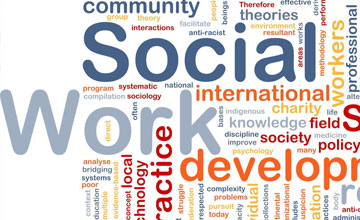
James R. Carter
- Courses6
- Reviews14
- School: Wright State University
- Campus:
- Department: Social Work
- Email address: Join to see
- Phone: Join to see
-
Location:
3640 Colonel Glenn Hwy
Dayton, OH - 45435 - Dates at Wright State University: December 2015 - January 2020
- Office Hours: Join to see
N/A
Would take again: Yes
For Credit: Yes
0
0
Mandatory
Good
Professor Carter's social work classes were very easy, However, almost the whole class was confused all the time because he didn't elaborate on our hybrid days. Instead of going to class on theses days, he will give you an online assignment to do. Honestly, we were left in the dark about those a lot. Overall, this class is easy and he's a funny guy.
Biography
Wright State University - Social Work
Experience
The Ohio State University
Graduate Student Lecturer
James worked at The Ohio State University as a Graduate Student Lecturer
The Ohio State University
Graduate Research Assistant
James worked at The Ohio State University as a Graduate Research Assistant
Wright State University
Associate Professor
James worked at Wright State University as a Associate Professor
Wright State University
Assistant Professor of Social Work & Gerontology
James worked at Wright State University as a Assistant Professor of Social Work & Gerontology
Columbus State Community College
Adjunct Instructor
James worked at Columbus State Community College as a Adjunct Instructor
The Albert Schweitzer Fellowship
Albert Schweitzer Fellow for Life
James worked at The Albert Schweitzer Fellowship as a Albert Schweitzer Fellow for Life
Columbus AIDS Task Force
Outreach Assistant
James worked at Columbus AIDS Task Force as a Outreach Assistant
Education
The Ohio State University
MPH
Health Behavior / Health Promotion
Thesis: Online sex-seeking ad content analysisThe Ohio State University
PhD
Social Work
The Ohio State University
Graduate Student Lecturer
The Ohio State University
Graduate Research Assistant
Franklin University
Bachelor of Science (B.S.)
Business Administration and Management, General
Publications
The Use of Emotional Imagery and Language in Egg Donation Web Sites
Journal of Consumer Health on the Internet
Gezinski, Lindsay B; Karandikar-Chheda, Sharvari; Carter, James R This research study sought to explore the use of emotional imagery and language on popular web sites that target egg donors. The research process included: (1) Systematic selection of Internet sites most accessible to consumers; and (2) A standardized description of each Internet site. From September 1, 2010 to October 1, 2010, the 3-member research team gathered and analyzed the content of the 19 web sites. Overall, the majority of egg donation web sites utilized emotional imagery and language in their appeals to egg donors. The most common emotional language used was “gift” or “gift of life”, mentioned 16 times on a total of 9 web sites. Moreover, three themes emerged pertaining to this emotional language: (1) Making dreams come true for reproductively-challenged women, (2) Giving the gift of life, and (3) Life-changing journey for the egg donor. Implications for social work practice, policy, and research are discussed. Key words: egg donation, oocyte donation, assisted reproduction, online information, web sites
The Use of Emotional Imagery and Language in Egg Donation Web Sites
Journal of Consumer Health on the Internet
Gezinski, Lindsay B; Karandikar-Chheda, Sharvari; Carter, James R This research study sought to explore the use of emotional imagery and language on popular web sites that target egg donors. The research process included: (1) Systematic selection of Internet sites most accessible to consumers; and (2) A standardized description of each Internet site. From September 1, 2010 to October 1, 2010, the 3-member research team gathered and analyzed the content of the 19 web sites. Overall, the majority of egg donation web sites utilized emotional imagery and language in their appeals to egg donors. The most common emotional language used was “gift” or “gift of life”, mentioned 16 times on a total of 9 web sites. Moreover, three themes emerged pertaining to this emotional language: (1) Making dreams come true for reproductively-challenged women, (2) Giving the gift of life, and (3) Life-changing journey for the egg donor. Implications for social work practice, policy, and research are discussed. Key words: egg donation, oocyte donation, assisted reproduction, online information, web sites
Economic Necessity or Noble Cause? A qualitative study exploring motivations for gestational surrogacy in Gujarat, India
Affilia
In this qualitative study, in-depth interviews were conducted with 16 surrogates from India. Two themes are discussed: 1) Motivations for becoming surrogates and 2) Role of family and community in surrogacy. The respondents were illiterate women, ages from 21-30 years and had been surrogate mothers an average of two times. Motivations for surrogacy were financial in nature. Surrogates reported stigma from extended family and community forcing them to leave their homes and relocate after surrogacy. This study recommends counseling and psycho-social support services to women and change in policy to execute a stringent law to protect the rights of surrogates.
The Use of Emotional Imagery and Language in Egg Donation Web Sites
Journal of Consumer Health on the Internet
Gezinski, Lindsay B; Karandikar-Chheda, Sharvari; Carter, James R This research study sought to explore the use of emotional imagery and language on popular web sites that target egg donors. The research process included: (1) Systematic selection of Internet sites most accessible to consumers; and (2) A standardized description of each Internet site. From September 1, 2010 to October 1, 2010, the 3-member research team gathered and analyzed the content of the 19 web sites. Overall, the majority of egg donation web sites utilized emotional imagery and language in their appeals to egg donors. The most common emotional language used was “gift” or “gift of life”, mentioned 16 times on a total of 9 web sites. Moreover, three themes emerged pertaining to this emotional language: (1) Making dreams come true for reproductively-challenged women, (2) Giving the gift of life, and (3) Life-changing journey for the egg donor. Implications for social work practice, policy, and research are discussed. Key words: egg donation, oocyte donation, assisted reproduction, online information, web sites
Economic Necessity or Noble Cause? A qualitative study exploring motivations for gestational surrogacy in Gujarat, India
Affilia
In this qualitative study, in-depth interviews were conducted with 16 surrogates from India. Two themes are discussed: 1) Motivations for becoming surrogates and 2) Role of family and community in surrogacy. The respondents were illiterate women, ages from 21-30 years and had been surrogate mothers an average of two times. Motivations for surrogacy were financial in nature. Surrogates reported stigma from extended family and community forcing them to leave their homes and relocate after surrogacy. This study recommends counseling and psycho-social support services to women and change in policy to execute a stringent law to protect the rights of surrogates.
A Comprehensive Review of Reproductive Egg Donation Web Sites
Taylor & Francis
Reproductive egg donation is a growing business in the United States, serving an estimated one in five couples who experience reproductive challenges in their lifetime. Reproductive egg agencies are increasingly utilizing the Internet to inform and recruit poten- tial donors. Considerable variability in the portrayals of the medi- cal process, comprehensive disclosure of the medications involved, and the style of appeals employed by such agencies exists on many of the most popular web sites analyzed. This research provides a comprehensive review of the information provided to potential donors. Implications for research, policy, and practice are dis- cussed.
Positions
OSU College of Public Health Alumni Association
Board Member-at-large, Student Engagement Liaison
OSU College of Public Health Alumni Association
Board Member-at-large, Student Engagement Liaison
OSU College of Social Work, PhD Curriculum Committee
Student Representative
urn:li:fs_position:(ACoAAAeLb8EB3_2FGgw0nbsXMNAvnsdn3MJ0W1A,280212026)
OSU College of Public Health Alumni Association
Board Member-at-large, Student Engagement Liaison
OSU College of Social Work, PhD Curriculum Committee
Student Representative
urn:li:fs_position:(ACoAAAeLb8EB3_2FGgw0nbsXMNAvnsdn3MJ0W1A,280212026)
OSU College of Public Health Alumni Association
Board Member-at-large, Student Engagement Liaison
OSU College of Social Work, PhD Curriculum Committee
Student Representative
urn:li:fs_position:(ACoAAAeLb8EB3_2FGgw0nbsXMNAvnsdn3MJ0W1A,280212026)
OSU College of Public Health Alumni Association
Board Member-at-large, Student Engagement Liaison
OSU College of Social Work, PhD Curriculum Committee
Student Representative
urn:li:fs_position:(ACoAAAeLb8EB3_2FGgw0nbsXMNAvnsdn3MJ0W1A,280212026)
OSU College of Public Health Alumni Association
Board Member-at-large, Student Engagement Liaison
OSU College of Social Work, PhD Curriculum Committee
Student Representative
urn:li:fs_position:(ACoAAAeLb8EB3_2FGgw0nbsXMNAvnsdn3MJ0W1A,280212026)
OSU College of Public Health Alumni Association
Board Member-at-large, Student Engagement Liaison
OSU College of Social Work, PhD Curriculum Committee
Student Representative
urn:li:fs_position:(ACoAAAeLb8EB3_2FGgw0nbsXMNAvnsdn3MJ0W1A,280212026)
OSU College of Public Health Alumni Association
Board Member-at-large, Student Engagement Liaison
OSU College of Social Work, PhD Curriculum Committee
Student Representative
urn:li:fs_position:(ACoAAAeLb8EB3_2FGgw0nbsXMNAvnsdn3MJ0W1A,280212026)
OSU College of Public Health Alumni Association
Board Member-at-large, Student Engagement Liaison
OSU College of Social Work, PhD Curriculum Committee
Student Representative
urn:li:fs_position:(ACoAAAeLb8EB3_2FGgw0nbsXMNAvnsdn3MJ0W1A,280212026)
Possible Matching Profiles
The following profiles may or may not be the same professor:
- James Carter
Texas A&M University - History - James Carter
California University of Pennsylvania - Communication Studies - James Carter
Bridgewater State University - Education - James Carter
Drew University - History
Possible Matching Profiles
The following profiles may or may not be the same professor:
- James R Carter (30% Match)
Lecturer
California State University - California State University - James R Carter (40% Match)
Visiting Faculty
Indiana University - Indiana University - James R Carter (30% Match)
Professor
Valdosta State University - Valdosta State University - James R Carter (30% Match)
Lecturer
Wichita State University - Wichita State University - James Carter (00% Match)
Professor
University Of Charleston - University Of Charleston





